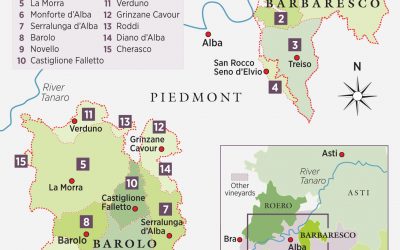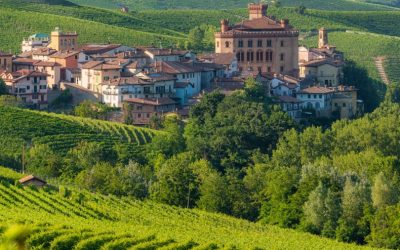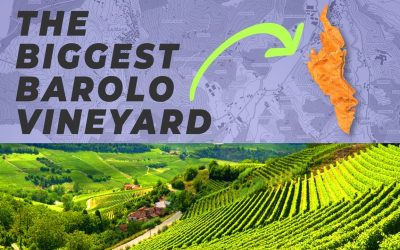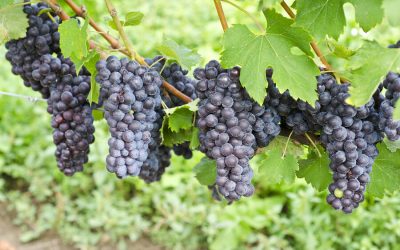Why is 2016 the best year wine?
When it comes to fine wine, not all vintages are created equal. Each year’s growing conditions, such as temperature, rainfall, and sun exposure, greatly impact the quality and character of the grapes, and consequently the wine produced. Among the recent vintages, 2016 has gained a particularly glorious reputation in the wine world. Let’s delve into the reasons why 2016 has emerged as an extraordinary vintage for wine, focusing on renowned regions like Barolo 2016, Bordeaux, and Napa Valley.
Why is 2016 the best year wine?
The year 2016 is regarded as a phenomenal vintage in the winemaking world, largely due to a series of beneficial weather patterns. The year coincided with an El Niño event, a climatic phenomenon that impacts global weather, especially in the Southern Hemisphere. Europe, however, experienced less of this impact, creating a favorable environment for many wine regions. Notably, France enjoyed an exceptional growing season. The relatively calm winter transitioned into a warm, dry spring, leading to an early bud burst – a crucial stage in vine growth that can set the rhythm for the entire growing season.
As the year progressed, 2016 continued to shine as a vintage, particularly known for producing high-quality white wines and even better red wines. This can be attributed to the ideal balance of sunshine and rainfall that year, allowing for the grapes to ripen evenly while maintaining necessary acidity levels. This balance, combined with the early bud burst, allowed for an extended growing period, during which the grapes could develop complex flavors. Although it’s subjective to label any year as the “best” for wine, it’s undeniable that 2016 was an exceptional vintage, especially in Europe and particularly for red wines.
Best 2016 Vintage Wine:
The year 2016 is widely regarded as an exceptional vintage for several wine regions, and choosing the “best” wine from this year can be quite subjective as it often depends on personal preference. Here are a few standout wines from 2016 that have been highly praised by critics and wine enthusiasts:
- Barolo 2016: The Barolo wines from this vintage are recognized for their impressive balance of flavor, tannic structure, and high acidity, making them perfect for long-term aging. The Giacomo Conterno Monfortino Riserva and the Bruno Giacosa Le Rocche del Falletto Riserva are particularly sought-after expressions from this vintage.
- Bordeaux 2016: Bordeaux had an excellent year in 2016, and many of its wines showcase an exceptional balance between fruit concentration, acidity, and tannic structure. Renowned wines such as Château Margaux and Château Latour are highly regarded from this vintage.
- Burgundy 2016: Despite a challenging start to the growing season with frost damage, the Burgundy region managed to produce wines of outstanding quality in 2016. The vintage is known for its expressive and concentrated reds and beautifully balanced whites.
- Napa Valley Cabernet Sauvignon 2016: This vintage produced excellent expressions of Cabernet Sauvignon, known for their power, depth of flavor, and aging potential. Notable producers include Opus One, Harlan Estate, and Screaming Eagle.
- Rhone Valley 2016: The Rhone Valley had an exceptional vintage, particularly for Grenache-based wines in the Southern Rhone. The wines are known for their rich, powerful flavors and long aging potential. Producers like Château de Beaucastel and Domaine de la Janasse received high acclaim.
Please remember that the “best” wine is highly subjective and depends on individual taste preferences. The wines listed above have received high ratings from critics and are widely appreciated by wine enthusiasts. However, there may be many other 2016 wines that could be your personal “best” based on your individual palate.
Ideal Weather Conditions in 2016 for grapes
The quality of a vintage largely hinges on the weather experienced throughout the growing season. In 2016, some of the world’s most prominent wine regions enjoyed near-perfect weather conditions. In Barolo, Italy, the winter was cold, followed by a warm and dry spring that ensured optimal bud break and flowering. Summer was hot but balanced by well-timed rains, and autumn was dry with significant diurnal temperature swings, allowing the Nebbiolo grapes to mature evenly while retaining their acidity.
In Bordeaux, France, a wet spring helped to replenish water reserves, followed by a hot and dry summer that ensured excellent ripening conditions. Similarly, in Napa Valley, California, a long growing season with moderate temperatures and no heat spikes led to ripe and healthy grapes.
High-Quality Grapes: The exceptional weather in 2016 resulted in grapes of outstanding quality. In Barolo, the Nebbiolo grapes achieved a perfect balance of sugar, acid, and phenolic compounds, essential for producing high-quality wine. The tannins were ripe and well-integrated, imparting firm structure without being overly astringent. The same pattern emerged in other wine regions. Bordeaux experienced an excellent Merlot harvest in 2016, resulting in rich and full-bodied wines. In Napa Valley, both the Cabernet Sauvignon and Chardonnay grapes ripened perfectly, leading to expressive and balanced wines.
Longevity and Aging Potential: One of the key factors that make a wine vintage truly stand out is its aging potential. The 2016 wines from Barolo, Bordeaux, and Napa Valley all show a remarkable balance of intense flavors, firm structure, and high acidity – characteristics that suggest a long life ahead. Wine connoisseurs and collectors highly value this potential for evolution and improvement over time in the bottle.
Decoding the Yield: Quantity and Quality in 2016 and 2017
When it comes to assessing the quality of a vintage, yield plays an integral role. Yield refers to the amount of wine that is produced per unit of vineyard area. This is influenced by several factors, including weather conditions, viticulture practices, and grape variety. In 2016, it was a year of scarcity, with the yield being 20% lower than the regional average. This was mainly due to the climatic conditions that led to a lesser but more concentrated production of grapes. On the other hand, 2017 saw a generous yield, above the regional average, owing to favorable weather and growing conditions.
Wine Profiles: The Distinctive Taste of 2016 and 2017 Wines
The distinctive profile of wines from 2016 and 2017 is a reflection of the unique weather patterns and growing conditions in those years. In 2016, the wines were characterized by their excellent structure and balance. The reds, in particular, were highly praised for their depth of flavor and high tannin content, indicative of a good aging potential. The whites, while not as exceptional as the reds, were still of high quality.
On the other hand, 2017 wines, though more abundantly produced, may not possess the same cellaring potential as the 2016 wines. However, they are well-balanced and flavorful, providing immediate enjoyment. The weather patterns of 2017, particularly the warm growing season, resulted in wines with a ripe fruit character and softer tannins.
The Italian Scenario: Evaluating 2016 and 2017 Wines from Italy
In Italy, both 2016 and 2017 were noteworthy vintages, each with its distinct characteristics. For regions like Barolo, 2016 was a standout year, particularly for Nebbiolo-based wines, with producers praising the excellent balance of acidity, tannin, and fruit concentration, which suggests a promising aging potential.
Meanwhile, 2017 was a warmer year, which resulted in wines with a more pronounced fruit character and rounder tannins. While they might not offer the same aging potential as the 2016 wines, they are still of high quality and provide immediate drinking pleasure.
The Verdict: Which Vintage Takes the Crown?
Asking whether 2016 or 2017 was a better year for wine is not a straightforward question. Both vintages produced excellent wines, each with their unique profiles and strengths. The decision ultimately comes down to personal preference – if you prefer wines with a firm structure and high aging potential, then the 2016 vintage might be more to your liking. If, however, you enjoy wines with ripe fruit character and softer tannins that can be enjoyed right away, then you might lean towards the 2017 vintage. Regardless, both years offer plenty of delightful options for wine lovers around the world.
The Wine Vintage Guide – Knowing Which Year to Choose
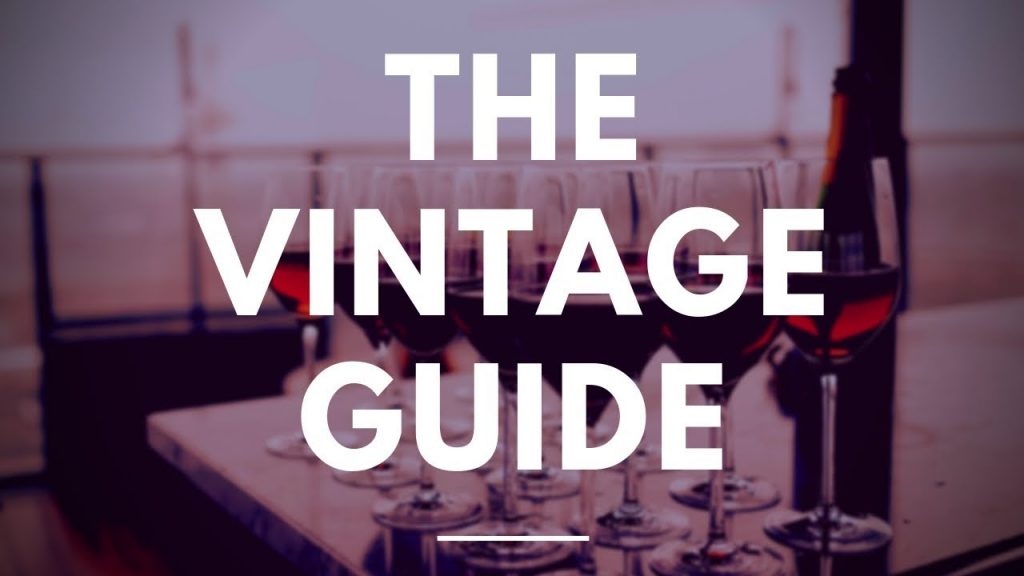
A wine vintage refers to the year when the grapes were harvested and the wine was made. The quality of a vintage can be influenced by various factors including weather conditions, vineyard location, winemaking techniques, and even market trends. In a video by The Grape Explorer, the concept of ‘vintage’ is elaborated, providing viewers with a rundown of popular vintages from the last 20 years across various regions globally. This information is incredibly useful for wine enthusiasts looking to invest in a special bottle and wanting to ensure they choose a good vintage year.
However, it’s crucial to note that this is just a guide and the ultimate buying decision should consider multiple factors, not least of which is personal preference. Some winemakers, due to their skill, location, or resources, can consistently produce great wines irrespective of the vintage. While the vintages outlined in the video are generally considered better from a broader winemaking perspective, the ‘best’ wine can often be a matter of personal taste and preference.
FAQ BAROLO WINE VINTAGE 2016
Whether 2016 is the best year for wine is subjective and depends on the particular wine region and type of wine in question. However, in many parts of the world, the 2016 vintage was indeed excellent. This was especially true for red wines. The favorable climatic conditions throughout the year resulted in balanced, intensely flavored red wines with high aging potential.
The year 2016 saw some extraordinary vintages, especially in regions like Barolo, Bordeaux, and Napa Valley. The wines from these regions showed remarkable balance between structure, acidity, and fruit flavors, suggesting a promising capacity for aging. So, in many ways, it was indeed a very good year for vintage wines, and particularly so for reds. Comparing the 2015 and 2016 vintages, both years produced excellent wines, but they are different in character. 2015 was a warm year that led to powerful, rich wines with a great deal of ripeness. 2016, while also warm, had a few more cool periods which helped preserve acidity and overall balance in the grapes. This led to wines that were equally ripe but with a touch more finesse and longevity.
Ultimately, choosing a “best” year for wine comes down to individual preference. Some might prefer the robust intensity of the 2015 wines, while others might enjoy the elegant balance of the 2016 wines. Both vintages have their unique strengths and offer an array of high-quality options for wine enthusiasts.
Conclusion:
When reflecting on the 2016 vintage, it’s clear that this year delivered something special for wine lovers. Whether it was the Nebbiolo grapes from Barolo, the Merlot from Bordeaux, or the Cabernet Sauvignon and Chardonnay from Napa Valley, the wines from 2016 have exhibited a rare combination of balance, intensity, and potential for longevity. While they can certainly be enjoyed now, these wines are expected to evolve and improve over the coming years, solidifying 2016’s place as an extraordinary vintage.
